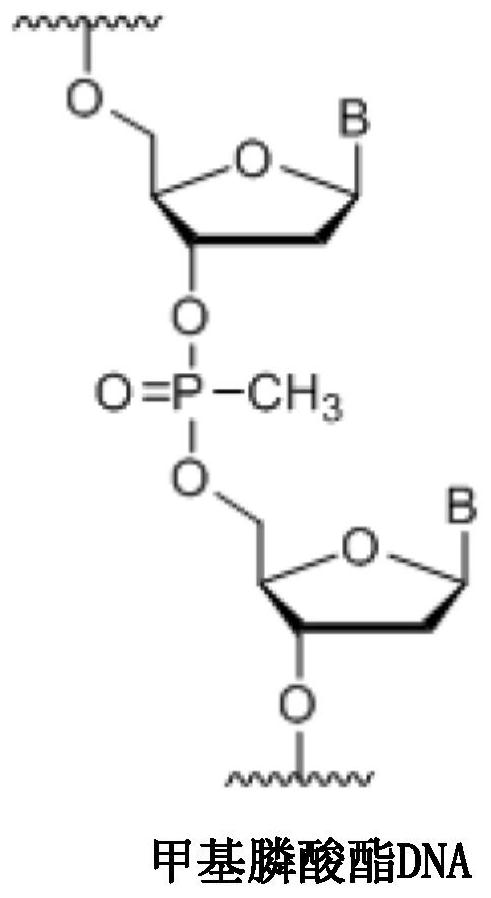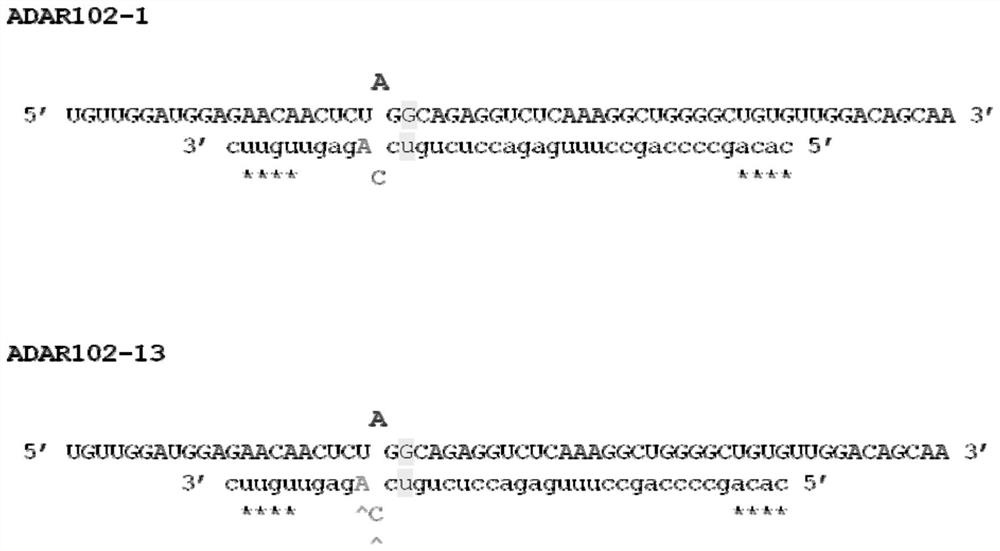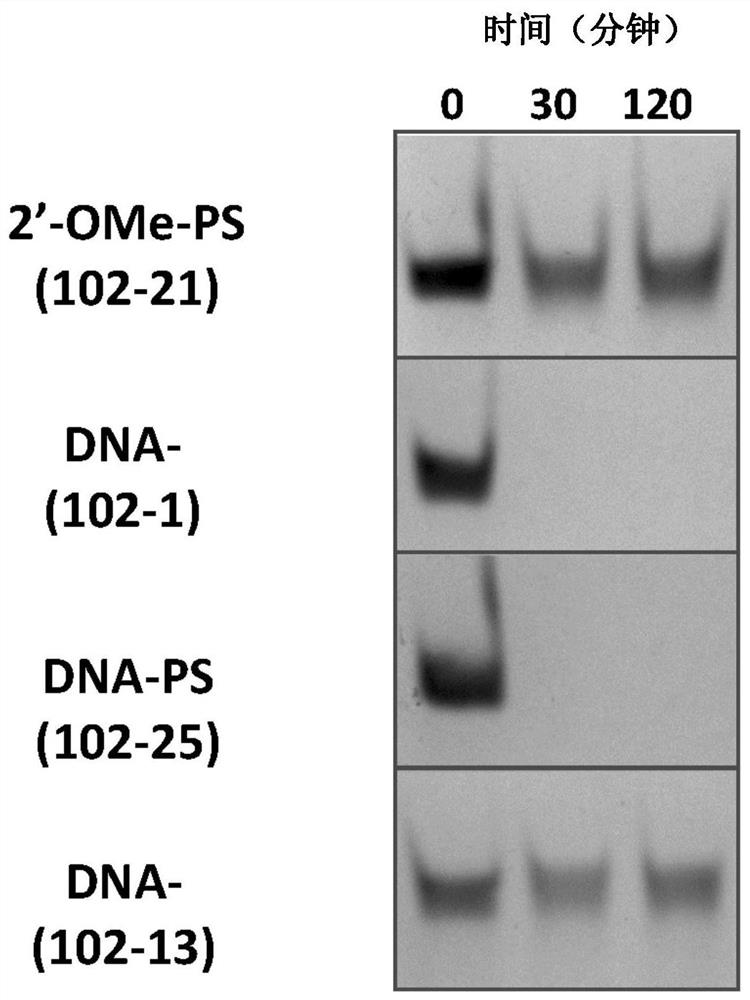Chemically modified oligonucleotides for RNA editing
An antisense oligonucleotide, nucleotide technology, applied in DNA/RNA fragments, recombinant DNA technology, biochemical equipment and methods, etc., can solve the problem of not showing the editing effect of target nucleotides
- Summary
- Abstract
- Description
- Claims
- Application Information
AI Technical Summary
Problems solved by technology
Method used
Image
Examples
Embodiment 1
[0063] Example 1: Antisense Oligonucleotides Comprising Methylphosphonate (MP) Linkage Modifications Using In Vitro Biochemical Disaggregation Assays (AON) is more stable than AON lacking such MP modifications
[0064]It is well known that the presence of a 2'-OMe modification of the nucleotide sugar moiety opposite to a target adenosine in a target RNA molecule reduces the inosine transfer of that particular target adenosine compared to an AON that does not carry such a 2'-OMe modification. of deamination. Unfortunately, the absence of such sugar modification at this particular position makes AON unstable. The inventors of the present invention questioned whether this problem could be solved by modifying the internucleotide linkage between two DNA nucleotides. To this end, two methylphosphonic acids were introduced between the two DNA nucleosides in the AON (one of which is opposite the target adenosine present in the target mouse IDUA RNA molecule) and their respective ...
Embodiment 2
[0067] Example 2: RNA Editing by AONs Carrying Stabilizing MP Bond Modifications
[0068] Next, the inventors questioned whether the MP modification, despite providing a more stable AON, would still prevent RNA editing, similar to the low RNA editing efficiency observed in AONs carrying PS modifications between DNA nucleotides of the AON (Data not shown). Therefore, it was investigated whether the MP modification - which is now known to increase the stability of AON - allows RNA editing, unlike the 2'-OMe modification (which, although providing stability), renders AON ineffective in RNA editing .
[0069] To this end, ADAR102-1 and ADAR102-13 were compared in RNA editing assays as follows. First, two AONs were annealed to the mouse IDUA target RNA. Annealing was performed at a 1:3 ratio of target RNA to AON in buffer (5 mM Tris-Cl pH 7.4, 0.5 mM EDTA, and 10 mM NaCl) (final concentrations in editing reactions were 6 nM AON and 2 nM target). The samples were heated at 95°...
Embodiment 3
[0080] Example 3: RNA Editing by AONs Carrying Stable MP Bond Modifications
[0081] Next, the inventors questioned where in the AON MP modifications could be made and still allow RNA editing. AONs with MP modifications at bond positions 0 to -6 relative to orphan nucleosides were synthesized and tested. Editing assays were performed as in Example 2, but with the following changes: final concentrations of 1 nM target RNA, 24 nM AON, and 3 nM ADAR2, and using 3 mM MgSO in editing reaction buffer 4 Instead of 3mM MgCl 2 . The reaction was carried out as described in Example 2, and by adding 95 μl of boiled 3 mM EDTA solution to 5 μl from Extract an aliquot from the reaction to stop the reaction.
[0082] A 6 μl aliquot of the stop reaction mixture was then used as template for cDNA synthesis using the Maxima Reverse Transcriptase Kit (Thermo Fisher) and a target RNA-specific primer (5'-GGAAACGTAGGTTGGGGTGTG-3'SEQ ID NO:8). RNA was initially denatured at 95 °C for 5 min in...
PUM
 Login to View More
Login to View More Abstract
Description
Claims
Application Information
 Login to View More
Login to View More - R&D
- Intellectual Property
- Life Sciences
- Materials
- Tech Scout
- Unparalleled Data Quality
- Higher Quality Content
- 60% Fewer Hallucinations
Browse by: Latest US Patents, China's latest patents, Technical Efficacy Thesaurus, Application Domain, Technology Topic, Popular Technical Reports.
© 2025 PatSnap. All rights reserved.Legal|Privacy policy|Modern Slavery Act Transparency Statement|Sitemap|About US| Contact US: help@patsnap.com



